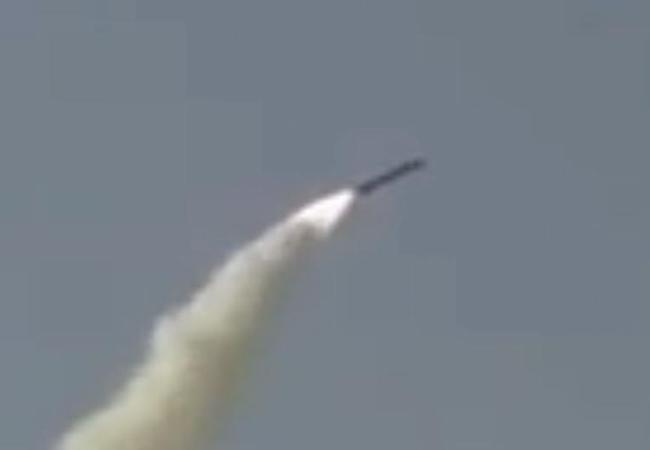
By Ahyousha Khan
In March 2018, Pakistan test fired its indigenous submarine launched cruise missile named Babur-3. It was the second test of Babur-3 after the first missile test in January 2017. The missile was fired from submersible platform off the Pakistani coast and successfully met all the test parameters. Pakistan’s sea launched cruise missile has a range of 450 kilometers and can carry conventional and nuclear warheads. Babur 3 uses air-water controlled propulsion, advanced guidance/navigation system and is designed to eject horizontally through submarine torpedoes rather than vertically through cannisterised vertical launch systems. With vertical launch systems it is impossible to keep weapons in dissembled form but with horizontal launch system Pakistan has made this option possible for itself. Thus, the test of Babur-3 is essential in journey towards credible 2ndstrike capability. Up till now, Pakistan has not revealed as to which submarine will be used to launch Babur-3 but there is some information available regarding the options which can be used including Augusta 90-B or Chinese type 039 A, which Pakistan is procuring. Augusta 90-B series is originally a French technology, and is currently in use by Pakistan. Augusta series is a diesel powered submarine but it works on air propulsion and has the capacity to stay in water for three weeks. Benefit of using diesel powered submarine, which works on air propulsion is that it causes low frequency waves consequently is harder to trace down.
In South Asia, massive militarization and nuclearization of India was the compelling factor for Pakistan to develop 2ndstrike capability. Development of SLCM was the reaction to the provocative and offensive Indian policies rather than ambitious choices by Pakistan. Fusion of strategic triad with dream of blue water navy is destabilizing not only for South Asian stability but also for whole Indian Ocean. Another contributing factor in Pakistan’s pursuit of 2ndstrike capability is India’s shifting nuclear doctrine in which splendid first strike or preemptive strikes figure as one of the important factors. Although, Pakistan has always believed that India’s declaratory nuclear doctrine is different from its actual policies but, initially right after independence India lacked the naval power base to fulfill its hegemonic ambitions. However, now with its indigenously built fleets of SSBN, SSNs, air craft carriers, K4 missiles, K15 missiles and designated naval satellites to enable intelligence, communication and reconnaissance have provided India with sufficient military might in Indian Ocean.
For Pakistan, sole purpose of nuclearization lies in creating nuclear deterrence that could lead to strategic stability vis-à-vis India. However, deterrence is a continuous process which requires validation from time to time in face of changing policies, doctrines and technologies. In South Asia, it became that Test of Babur-3 in March was an attempt by Pakistan to validate its 2ndstrike capability. After first test of SLCM Babur-3, India was of the view that this is a nuclear bluff and its military establishment believed that Pakistan was bluffing which India could easily call any time. Thus, by validating the 2ndstrike capability, Pakistan negated India’s claim of nuclear bluff. As for Pakistan, unlike India, nuclear weapons and deterrence acquired through them are the matter of its survival not prestige.
Issue faced by Pakistan regarding second strike capability is survivability of the warheads designated for the task. Thus, Nuclear powered submarines that have capability to stay submersed for more than half a year are preferred choice in making second strike more credible. At the moment, Pakistan does not have nuclear powered submarine, which is expensive yet very crucial in maintaining credible second-strike capability. So, for credible second-strike capability, Pakistan will be venturing into nuclear powered submarine. But, so far Indian threat is countered through the second-strike capability based on cruise missiles. In longer run, to protect its interest in Indian Ocean, Pakistan needs strong navy that is indigenous in naval capabilities including ships, submarines and missiles.
Ahyousha Khan is a Research Associate at the Strategic Vision Institute in Islamabad, Pakistan




